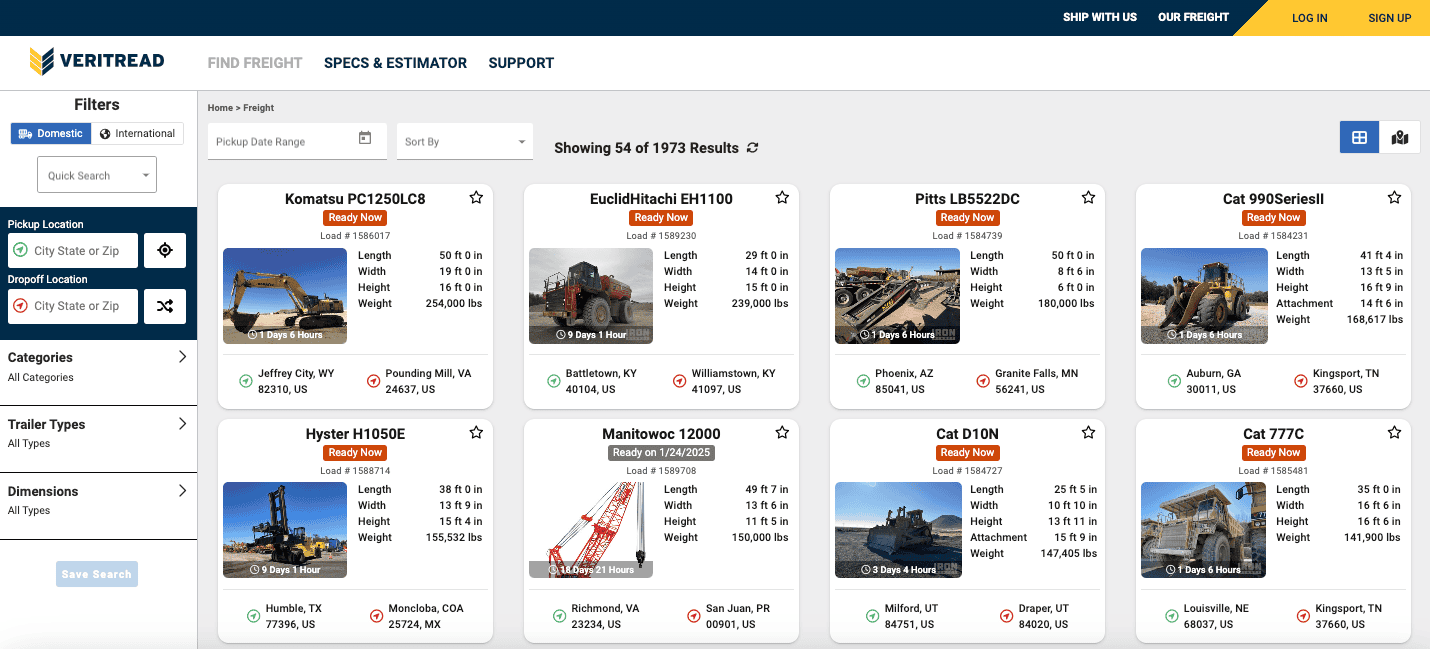How to Transport Steel Beams
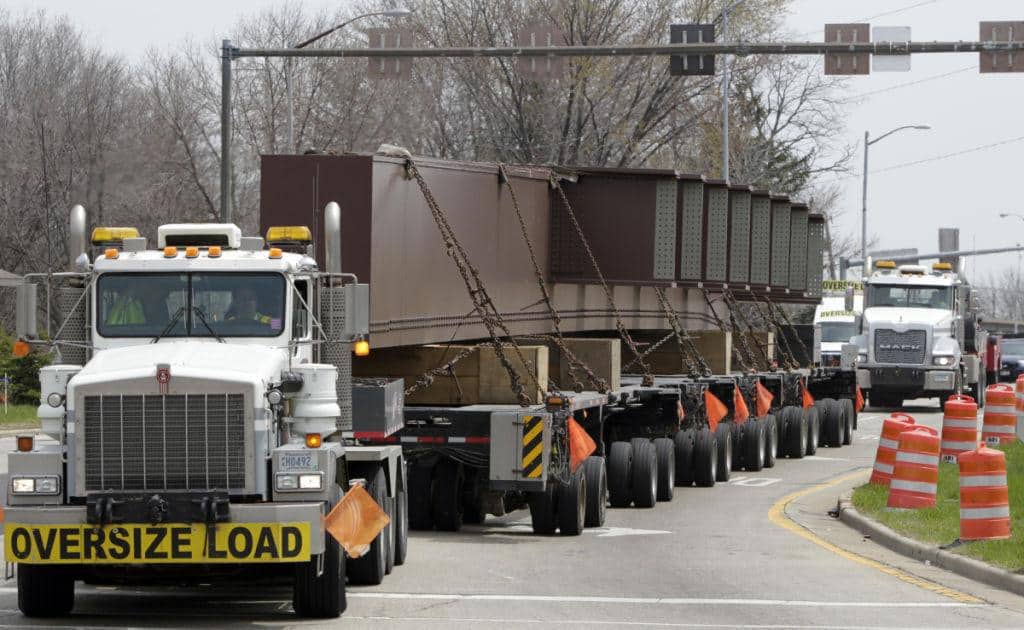 America is one of the top producers of steel production in the World. With over half of new construction relying on steel beams, the transportation and care to construction sites is critical. To transport large steel beams to the construction site, it takes more than a pickup truck or even a standard 18-wheeler.
America is one of the top producers of steel production in the World. With over half of new construction relying on steel beams, the transportation and care to construction sites is critical. To transport large steel beams to the construction site, it takes more than a pickup truck or even a standard 18-wheeler.
Transporting Steel Beams
Specialized heavy haul cargo haulers like a flatbed trailer is needed to handle items with substantial length and weight, like to transport steel beams. The other thing you want to make absolutely certain of when using this mode of shipping is that they are securely fastened to the bed, or each other if stacked. Cranes, Forklifts and a sturdy trailer are just a few things needed to get those steel beams on the road and on their way to your site. Depending on the size, you will probably need special oversize permits as well as escort vehicles, it is best to check with state regulations, but your carrier should be well versed in what is needed in those areas.
Steel Beam Types and Uses
There are many types of steel beams used in construction. Steel bonds well to concrete and has many features that make is appealing to major construction projects. The most popular steel beams, I beams, are used in the structural steel industry. They are critical in supporting trusses and the main framework of the building. These I beams ensure that the building structure is strong and supported. H beams, also known as Wide Flange Beams, are used in construction of buildings as well, but are more known for their use in bridges and trailers. H beams can span for distances over 325 feet, while I beams are designed to stay within 100 feet. With their wide flange and thicker central web, H beams can bear larger weight capacities than I beams. H beams are also easier to weld together because of their outer flanges being straight, where I beam flanges are tapered. Whether you are transporting I beams or H beams, VeriTread is here to help.
Preparation is Key for Successful Steel Beams Transport
Perform a Documented Risk Assessment
To ensure that you can handle the risk of a situation, it is important to conduct an assessment. You will document what steps are taken in response and how they could fail so things never get out of control or cause unnecessary harm.
Outfit Sites & People With PPE (Personal Protective Equipment)
The safety of your crew is the backbone of transport. Without proper protection, they can be at risk not only while preparing for and completing tasks but also during transport if you’re carrying heavy cargo. Focusing on PPE documentation will strengthen the overall assessment skill set because it highlights how we take care of ourselves when working with risky loads and situations.
Determine the Weight and Dimensions of Your Steel Beams
Every load begins with knowing the dimensions and weight of your load. The height, width, length, and weight of your steel beams is a vital factor when transporting it. The DOT regulations for transportation revolve around these dimensions. Verify them before you begin to avoid unnecessary fines, delays, or accidents.
Inspect Your Truck and Trailer
Make sure your truck has adequate power to tow the load and your trailer is rated to handle the cargo weight. Inspect your truck and trailer is in good working order, pay specific attention to the tires, lights, brakes, tie-down points, and hydraulic hoses. Equipment failures can lead to delays, injury, or even death. If you notice any potentials problems, take time to address them before you get on the road.
How to Load Steel Beams Safely
1) Designate Duties
Make sure everyone involved in loading the steel beams has been trained properly. Not only do they need to know what they’re doing, but also how their actions might cause damage or injury if carried out improperly.

2) Make sure the trailer you are loading onto is on flat, level ground
A tilted trailer cannot hold the steel beams and keep them stable.

3) Be aware of all obstacles in your area
Adjust your loading strategy to avoid hitting any nearby objects and move everything to a safe distance if possible.
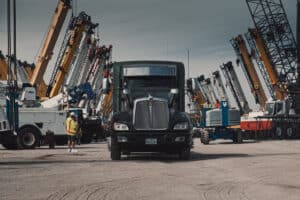
4) Check that your truck can handle the load and is parked and secure
Use the parking brakes and wheel chocks on the front and rear wheels of the trailer to prevent unwanted movement.
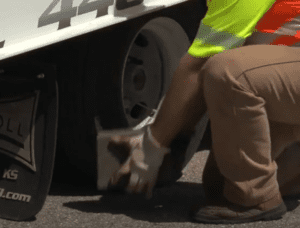
5) Check your trailer deck
Make sure it is as clean as possible and ready to accept the load. A clean work area has the fewest problems.
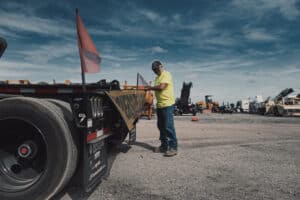
6.) Line up and approach the trailer
Use a spotter if your view is obstructed. Slowly drive your high capacity forklift or crane up to the trailer in preparation to load the steel beams. Make sure the machine gently lowers the load down on the trailer to avoid damaging the steel beams or trailer. Once you have your load onto the trailer, ensure all steel beams are stacked and stable on the trailer.

7) Secure Your Steel Beams for Transport
All loads must be secured before transportation. Use chains or straps to secure the steel beams onto your trailer or each other if stacked. Remember if you are more than 2 levels high, you must meet the DOT requirement and belly strap. Use ample & appropriate securing devices (chains, binders, straps, & anchors). Choose appropriate attachment points on and around the load as well as the trailer.
Once the load is secured, check everything a second time. It can be helpful to have a safety check system in place where multiple people check the load, instead of relying on a single person.
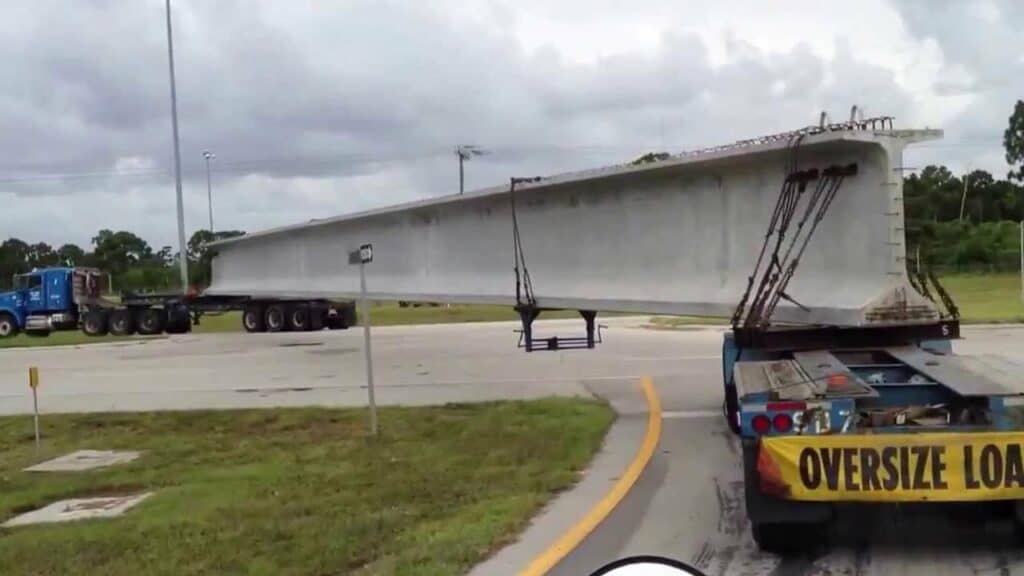
8) Verify Driver Visibility
Make sure the driver has a clear view of what’s going on around them. The placement of the steel beams should also allow free movement for the driver and should not obstruct them from exiting the vehicle or accessing any necessary vehicle components or accessories. This ensures the driver can safely transport the machinery and keeps your company compliant with DOT regulations.
How Much Does It Cost to Transport Steel Beams?
There is no exact price for to transport steel beams, but due to the large and heavy nature of steel beams, it is most likely going to be a higher price tag. Factors to take into consideration would be weight, length, distance from pick up and drop off location, if permits and escorts are needed and how many steel beams are being transported at once. Oversize shipments of steel are not very different than any other type of oversize load that would fall into this type of category. Trucks and each of their respective axles each have weight limits that must be strictly adhered to as it becomes a safety issue to ensure that the vehicles are not compromised under the strain of the additional weight.
Big Rig Videos shares a great overview of Buchanan Hauling & Rigging Inc transporting a beam.
Why choose VeriTread?
Let VeriTread Help You!
VeriTread is your go to solution for the transport of steel beams. We can have your freight delivered to any destination in North America in a safe and timely manner. We are experts at handling paperwork, selecting the right trailers and drivers, and charting the most efficient routes.
VeriTread makes it easy to get reliable freight quotes from the experts in equipment transport. VeriTread moves thousands of machines every year and can quickly generate a reliable quote on the go. Our extensive specs and dimensions database of 60,000+ items, ensures you spend less time researching and more time putting your equipment to work. The VeriTread Shipper quote process is the simplest way to transport your machines. Follow these easy steps and you will receive a quote in under one minute:
- Enter a Manufacturer & Model
- Verify or Edit Your Machine Dimensions
- Enter Pickup & Drop Off Locations
- Your Quote is Ready!
Getting started with VeriTread is easy. You can visit our contact form or call (800) 880-0468 or (863) 226-0903 for international calls.
veritread products
Top Articles
Freight Types
recent posts

Basic Tips of Heavy Equipment Transport

Understanding Equipment Transport Services
